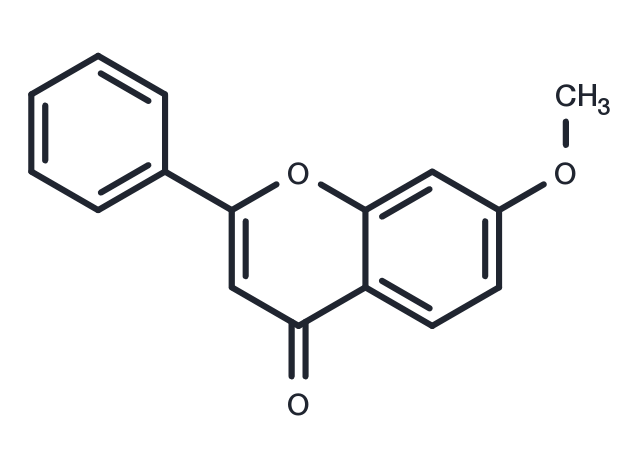Powder: -20°C for 3 years | In solvent: -80°C for 1 year


7-Methoxyflavone isolated from Zornia brasiliensis with antinociceptive effects.

| Pack Size | Availability | Price/USD | Quantity |
|---|---|---|---|
| 100 mg | In stock | $ 66.00 | |
| 1 mL * 10 mM (in DMSO) | In stock | $ 50.00 |


| Description | 7-Methoxyflavone isolated from Zornia brasiliensis with antinociceptive effects. |
| In vivo | The antinociceptive effect of 7-methoxyflavone (7MF) in mice using the following tests: acetic acid-induced writhing, glutamate- and formalin-induced nociception and hotplate. 7MF (30, 50, 100 and 300 μmol/kg, i.p.) reduced the number of writhes, with ID?? = 82.5 ± 11.7 μmol/kg and E max = 58.4%. 7MF treatment (100 μmol/kg, i.p.) inhibited paw-licking time in the neurogenic phase of the formalin pain response (65.6%) and did not decrease the nociceptive response in the inflammatory phase. In addition, in glutamate-induced nociception, 7MF inhibited 26% of the nociceptive answer. On the other hand, 7MF did not increase the latency time of the animals in the hotplate test. These results suggest that 7MF has peripheral antinociceptive activity |
| Molecular Weight | 252.26 |
| Formula | C16H12O3 |
| CAS No. | 22395-22-8 |
Powder: -20°C for 3 years | In solvent: -80°C for 1 year
DMSO: 25 mg/mL (99.1 mM)
You can also refer to dose conversion for different animals. More
bottom
Please see Inhibitor Handling Instructions for more frequently ask questions. Topics include: how to prepare stock solutions, how to store products, and cautions on cell-based assays & animal experiments, etc.
7-Methoxyflavone 22395-22-8 Others 7Methoxyflavone Inhibitor peripheral antinociceptive 7 Methoxyflavone inflammatory inhibit paw-licking time inhibitor
